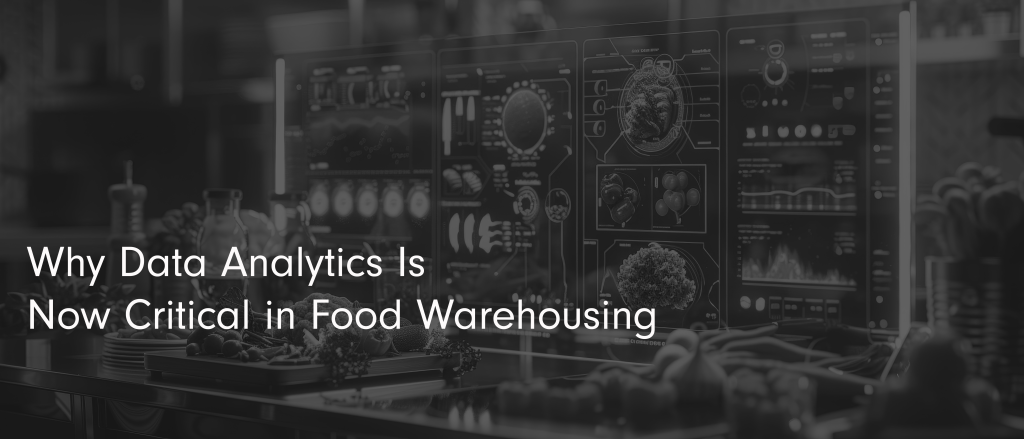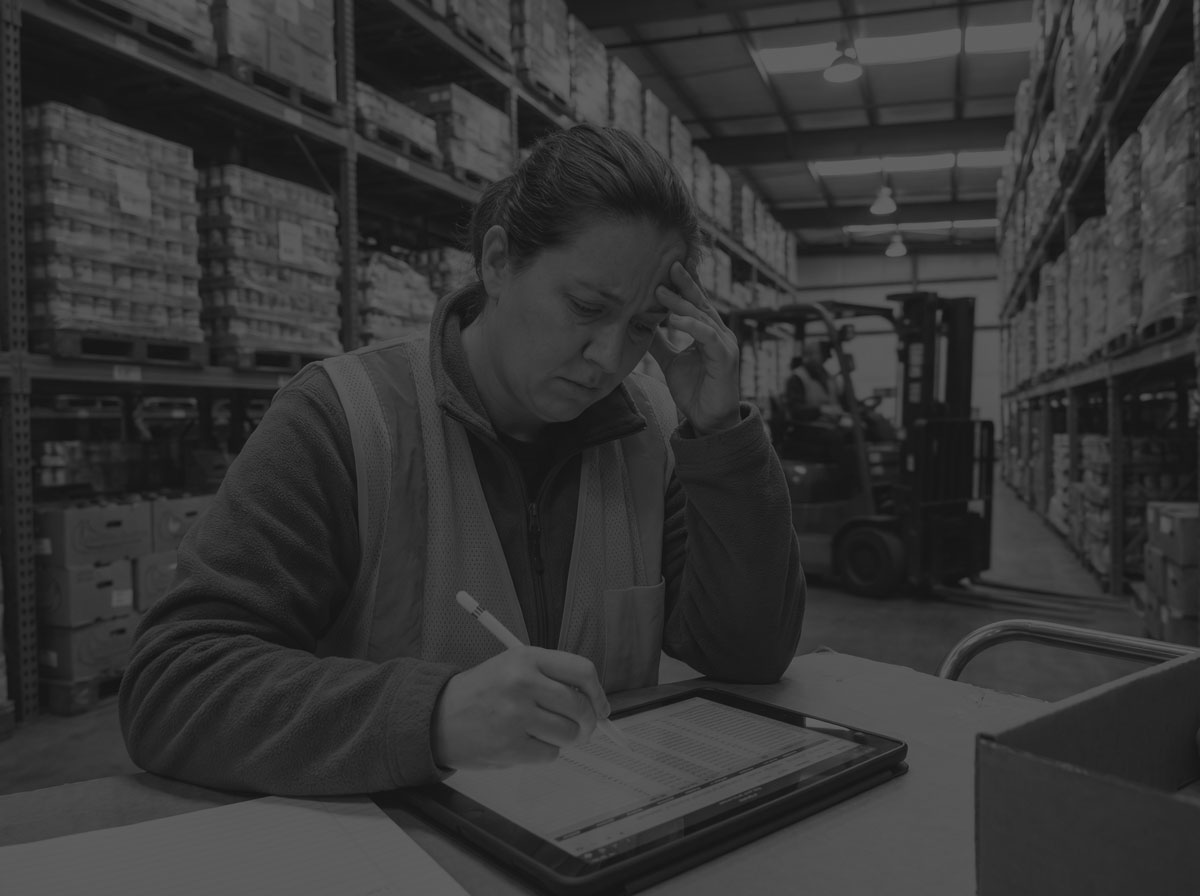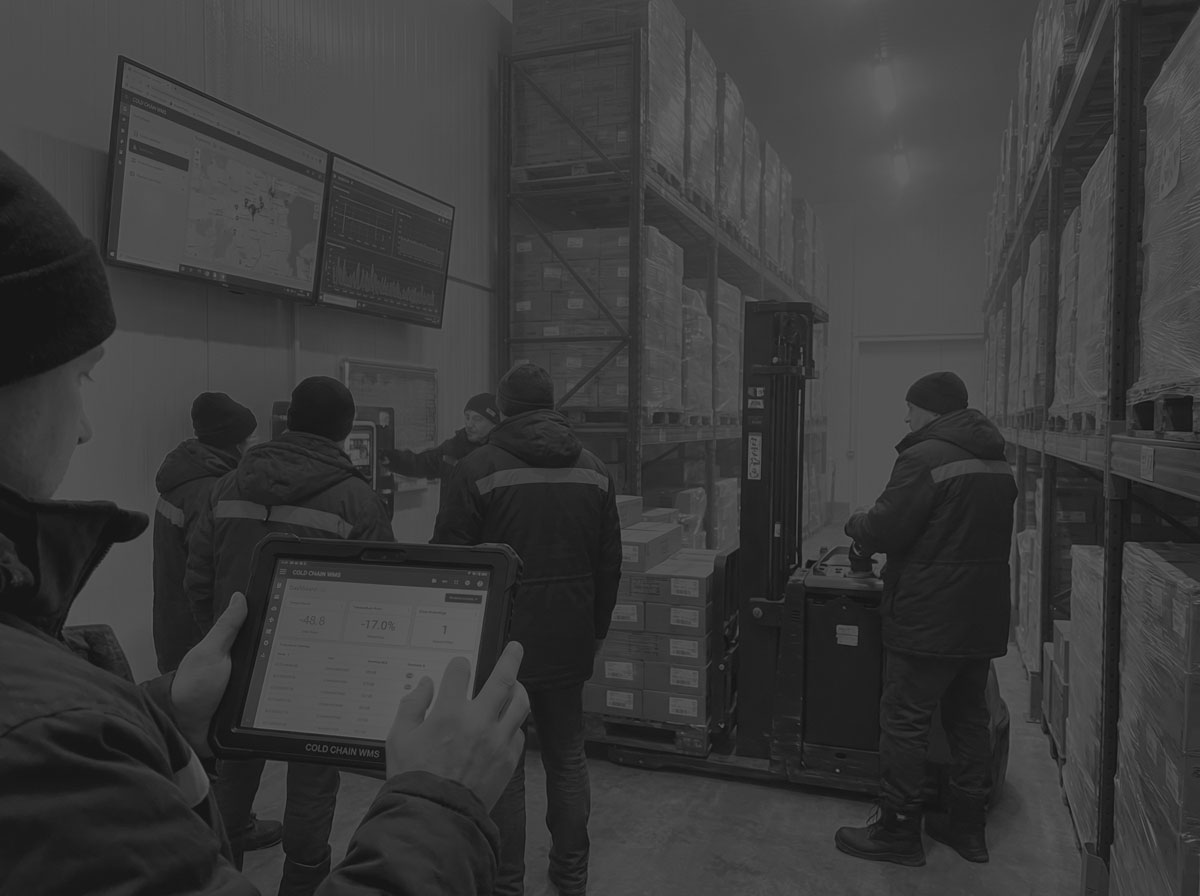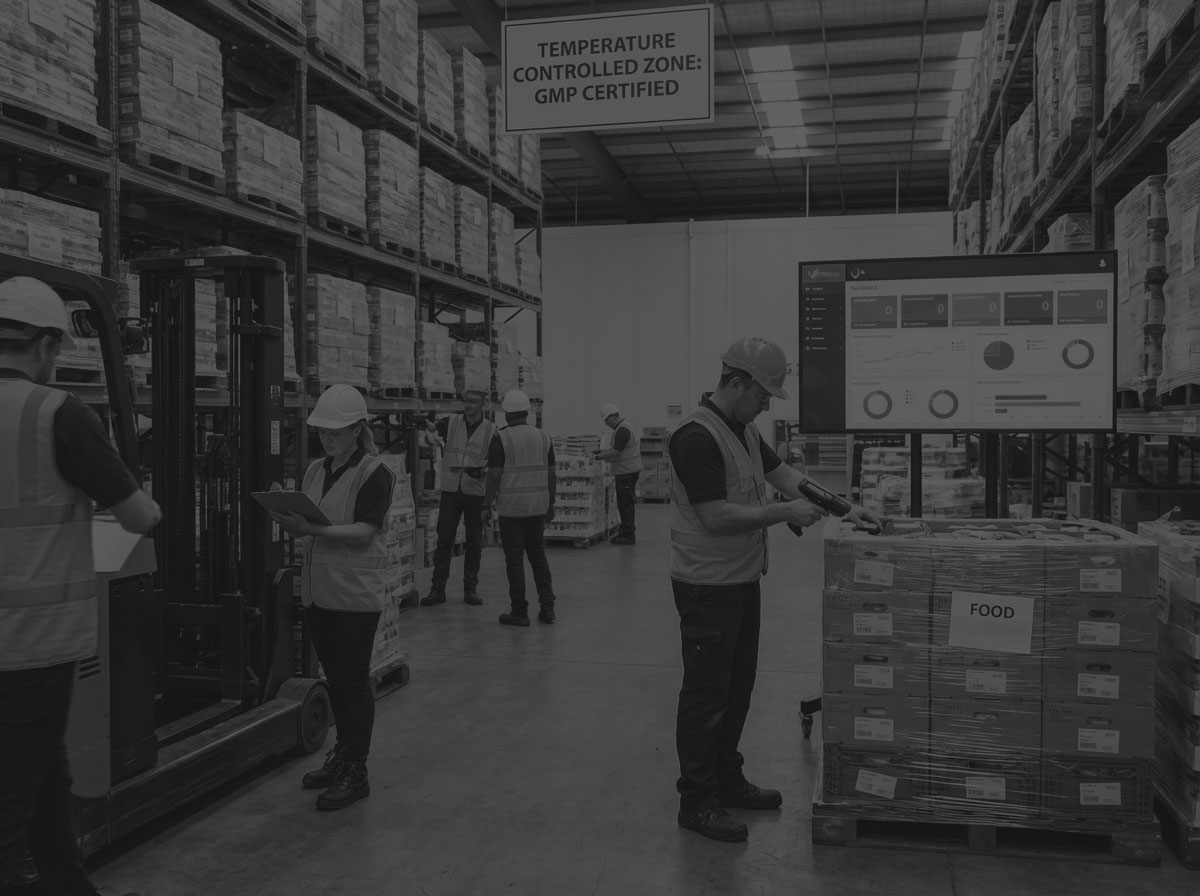
Why Data Analytics Is Now Critical in Food Warehousing.
In today’s food and beverage supply chain, margins are tight and expectations are high. Consumers want fresh, traceable products delivered on time, while regulators enforce strict standards on food handling and storage.
Warehouses that deal with perishable goods must maintain compliance, manage costs, and meet customer demands simultaneously. In this environment, data analytics in food warehousing is not optional, it is the foundation for smarter decisions.
By harnessing insights from big data, companies can reduce waste, streamline operations, and improve service. Modern warehouse management systems (WMS) turn raw information into actionable knowledge, helping leaders solve their most pressing business challenges.
The Business Challenges of Food Warehousing.
Storing and distributing food is far more complex than handling general merchandise. Perishables such as produce, dairy, and frozen goods have limited shelf life and require constant monitoring. Any lapse in temperature or humidity can cause spoilage and trigger costly recalls. Regulations demand full traceability, while thin margins leave little room for inefficiency.
Distributors also face pressure from consumers who expect greater transparency. Poor data management risks not just financial loss but brand reputation. Issues with inaccurate inventory tracking, delays in replenishment, or missed expiry dates quickly escalate into dissatisfied customers.
Decision-makers need reliable tools to manage compliance and efficiency together.

From Raw Data to Actionable Insights.
Modern WMS and ERP platforms gather information from scanners, IoT sensors, sales systems, and even weather feeds. When processed through advanced analytics, this raw data becomes the key to solving complex problems.
Real-Time Inventory Tracking and Shelf-Life Control
Analytics provides immediate visibility into stock levels, locations, and conditions. Real-time tracking reduces errors, supports audits, and prevents bottlenecks.
With FEFO/FIFO enforced by analytics, warehouses ensure products are shipped at peak freshness, reducing waste and maintaining compliance.
Predictive Demand Planning Powered by Machine Learning
By analysing sales history, seasonal patterns, and customer behavior, analytics can anticipate demand. Machine learning models help forecast volumes, highlight upcoming shortages, and suggest replenishment levels.
This prevents both stockouts and overstocks, improving freshness and inventory turnover.
Driving Production Efficiency in Picking and Labour
Analytics helps optimise workflows. A WMS equipped with AI guides staff through picking routes, balances workloads, and reduces idle time.
This improves accuracy, reduces labour costs, and increases throughput-delivering measurable gains in production efficiency.
Traceability, Compliance and Risk Reduction
Lot and batch tracking ensure rapid responses to recalls, while IoT sensors flag issues before they cause spoilage. Analytics alerts managers to anomalies, turning compliance into a proactive process.
By reducing exposure to fines, recalls, and reputational damage, analytics becomes a vital risk reduction tool as well as a driver of efficiency.
Improving Inventory Turnover Through Supply-Chain Integration
Warehouses are most effective when connected to the broader supply chain. Analytics improves integration with ERP systems, allowing better purchasing and planning. Monitoring raw materials upstream prevents bottlenecks downstream, keeping production running smoothly.
Customer-Centric Improvements.
Analytics also transforms the end-customer experience. Combining operational insights with customer feedback enables warehouses to align stock levels and service standards with market expectations.
Whether it’s ensuring popular items are always available or tailoring promotions, analytics helps warehouses strengthen loyalty and retention.

Turning Technology into Competitive Advantage.
The tools behind data-driven food warehousing fall into a few key categories:
Business Intelligence Dashboards in WMS
Dashboards turn complex datasets into clear business intelligence. Managers see KPIs such as accuracy, pick speed, and labour efficiency in one place, enabling quicker and better decisions.
IoT and RFID – Protecting Compliance and Shelf Life
IoT sensors monitor temperature and humidity while RFID tags trace goods from receiving to dispatch. Automated data collection minimises errors and ensures accurate records for compliance.
See our guide on RFID vs Barcode for Food Inventory Tracking
Predictive Analytics and Machine Learning in Action
Analytics modules forecast demand, recommend reorder points, and anticipate labour needs. By using predictive insights rather than reacting to issues, warehouses reduce waste and improve service levels.
The Role of a Data Warehouse in Unified Decision-Making
A central data warehouse consolidates information from WMS, ERP, and CRM systems. This ensures consistent reporting, enables advanced analysis, and avoids overloading operational systems.
Why Balloon One and Infios Are the Right Partner.
Technology is only part of the story-expertise in implementation and integration is just as important. Balloon One has worked with food distributors for over two decades, helping them modernise warehouses and unlock new value.
As a preferred Infios supplier, Balloon One brings proven expertise in deploying Infios WMS and analytics modules.
Classic Fine Foods reduced waste and tightened stock control with WMS analytics. Wing Yip improved picking accuracy and streamlined operations by integrating WMS with ERP. These examples show how a data-driven approach translates into real business results.
Balloon One also provides ongoing support, training, and integration services. Their team helps clients define KPIs, configure dashboards, and continuously improve.
When you work with us, you gain a partner invested in your long-term success.
What’s Next for Food Warehousing Analytics .
The next wave of innovation is already reshaping the warehouse. Wider adoption of machine learning and AI will move decision-making from descriptive to prescriptive-systems will not just forecast demand but recommend actions in real time. Sustainability will become a major driver, with analytics helping reduce waste, lower emissions, and optimise packaging.
Greater automation, from robotics to autonomous vehicles, will work hand in hand with analytics platforms. Combined with a growing emphasis on transparency and traceability, the warehouse of the future will be both more efficient and more customer-centric. Balloon One is well positioned to guide clients through these changes, ensuring they benefit from the latest advances.
Frequently Asked Questions (FAQ's)
Data analytics enables warehouses to manage perishables more efficiently, reduce waste, maintain compliance, and meet rising customer expectations. It turns raw operational data into insights that support faster, smarter decision-making.
By monitoring shelf life, enforcing FIFO/FEFO rules, and providing real-time visibility into stock conditions, analytics helps prevent spoilage and ensures products leave the warehouse at peak freshness.
A modern Warehouse Management System (WMS) uses data to optimise picking routes, balance labour workloads, automate tracking, and reduce errors—significantly improving accuracy and throughput.
Yes. Analytics combined with IoT sensors and RFID tracking provides accurate, real-time records of temperature, humidity, and product movement. This supports regulatory compliance and allows rapid, targeted responses to recalls.
Machine learning models analyse sales trends, seasonality, and customer behaviour to predict future demand. This helps warehouses avoid stockouts and overstocks while improving inventory turnover.







